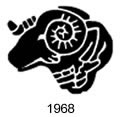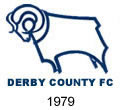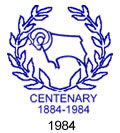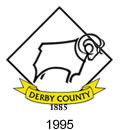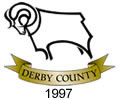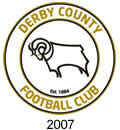Derby County
In 1884 attendances at Derby County Cricket Club were falling: a Midland Railway clerk named William Morley discussed the formation of a senior football team for Derby with his father William senior who happened to be a committee member of the county cricket club. When William senior officially proposed the idea the committee embraced the possibility of boosting the ailing cricket club’s finances. The county FA objected to the new club being called Derbyshire County FC so Derby County was settled on as a compromise. Fans generally refer to the club as "Derby" or "The Rams," since "County" is associated with their Nottingham rivals, Notts County. For a period they wore the amber, chocolate and light blue colours of their parent club.
On Saturday 14th November 1885 Derby County came of age when they defeated the mighty Aston Villa in the second round of the English Cup, establishing themselves as one of the country's leading clubs. When the Football League was formed four years later, The Rams were invited to become founder members. It was not until sometime in the 1890s that the ubiquitous white shirts were adopted.
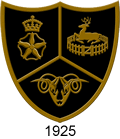
Derby found competition at this higher level a struggle: they successfully sought re-election in 1889 and 1891 and in 1895 they survived a test match to avoid relegation to Division Two. There followed a period of stability until they were relegated in 1907. In 1912 the club won the Second Division championship only to be go down again in 1914, returning to the top flight the following season as Division Two
champions for the second time.
In 1921, The Rams were back in Division Two once more but in 1926 they returned to Division One. The first evidence we have of the team wearing the club crest comes from a team photograph dated 1925. This incorporated a tudor rose with crown, a hart and a ram's head and was worn by the team for just one season.
In 1934 a new club crest was introduced in which the ram's head became dominant. This did not appear on team shirts. In 1946 Derby reached the FA Cup final but, perhaps due to austerity, the shirts worn in the final were devoid of any crest. The following season,
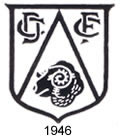
however, a new crest was introduced with the club's initials intertwined in the two upper sections. This version was used on players' shirts consistently until 1968.
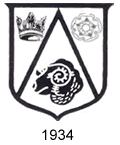
Derby remained in Division One until 1952 when they suffered a serious decline, winding up in Division Three (North) in 1955. From this nadir, they recovered in 1957 when they returned to Division Two as Third Division (North) champions. The club settled into mid-table mediocrity until Brian Clough and Peter Taylor arrived in 1967 and transformed the club.
One of the innovations Clough and Taylor brought about was a simplification of what was now considered a very old fashioned club crest. The new version dispensed with the shield and complicated monogramme and consisted simply of the ram's head.
Having guided these perennial underachievers back into the top flight as Division Two champions in 1969, Clough and Taylor created a
